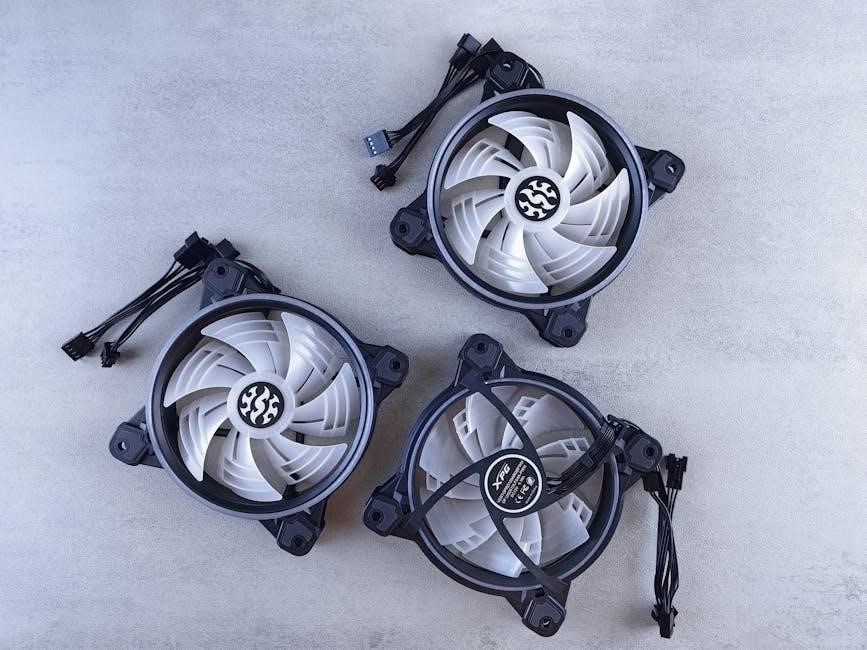Welcome to our comprehensive guide on the March of the Machine Draft! This set introduces fresh mechanics, strategic depth, and exciting gameplay, making it a must-explore format for Magic: The Gathering enthusiasts.
1.1 Overview of the Set
March of the Machine is a standalone set that introduces a futuristic, cybernetic theme, blending high-tech elements with fantasy. It features a mix of new mechanics, returning favorites, and a unique flavor profile. The set emphasizes synergy, with cards designed to work together in powerful combos. Key themes include artificial intelligence, machinery, and resistance movements. Players will find a diverse pool of cards, from aggressive creatures to controlling spells, with a focus on adapting to the evolving board state. The set also introduces the unique keyword ability “Oil,” which adds a new layer of strategy to gameplay.
1.2 Importance of Drafting in Magic: The Gathering
Drafting is a cornerstone of Magic: The Gathering, offering a dynamic and engaging way to play. It challenges players to build cohesive decks from a random pool of cards, fostering creativity and strategic thinking. Unlike constructed formats, drafting emphasizes adaptability and the ability to evaluate cards in the moment. This format is ideal for testing new sets, learning synergies, and refining deck-building skills. It also provides a level playing field, as everyone starts with the same resources. For both casual and competitive players, drafting is an essential experience that enhances overall gameplay proficiency and enjoyment.
1;3 Objective of the Guide
This guide aims to provide players with a detailed roadmap for mastering the March of the Machine Draft format. Whether you’re a seasoned pro or a newer player, this guide will break down key strategies, set mechanics, and drafting principles. We’ll explore how to evaluate cards, build cohesive decks, and adapt to the ever-changing draft environment. By the end of this guide, you’ll be equipped with the knowledge to make informed decisions, identify powerful synergies, and maximize your chances of success in March of the Machine Draft. Let’s dive in and unlock the full potential of this exciting set!
Understanding the Set Mechanics
March of the Machine introduces innovative mechanics that redefine gameplay, blending dynamic strategies with fresh synergies. Explore how these elements shape the draft experience and deck-building process.
2.1 Key Archetypes in March of the Machine
March of the Machine features several distinct archetypes that shape draft strategies. Aggressive decks focus on quick creatures and burn spells, while midrange builds balance threats and interaction. Control decks emphasize counterspells and card draw, and combo decks rely on synergistic pieces for explosive finishes. Additionally, the set introduces unique archetypes like Artifact-Matters, where cards reward players for building around artifacts. These archetypes create a dynamic metagame, allowing drafters to adapt and thrive based on the cards available during the draft.
2.2 Dominant Colors and Synergies
In March of the Machine, certain colors and combinations dominate the draft format. Blue excels with flying creatures and card draw, while White focuses on tokens and lifegain. Black thrives on removal and sacrifice synergies, Red emphasizes burn spells and large creatures, and Green leverages ramp and massive beasts. Key synergies include Blue-White for flyers and protection, Blue-Black for card advantage, and Red-Green for midrange power. These color pairings shape draft strategies, as players often prioritize cards that enhance their chosen color combination to build cohesive and competitive decks.
2.3 Unique Keywords and Abilities
March of the Machine introduces innovative keywords and abilities that redefine gameplay. Synthesis allows creatures to grow when other artifacts or creatures enter the battlefield, rewarding artifact-heavy builds. Overcharge enables players to sacrifice creatures to deal damage, emphasizing aggressive strategies. Tempo Theft lets you gain extra turns under specific conditions, creating high-reward opportunities. These abilities, along with others like Augment and Reconfigure, encourage players to build around synergy and adaptability. Understanding these mechanics is crucial for drafting effectively, as they shape the power level and interactions of cards in the set.
Drafting Strategies and Tips
Master the March of the Machine Draft by adapting to the set’s unique dynamics. Prioritize early picks, identify synergies, and adjust your strategy as the draft unfolds. Stay flexible, read signals, and build a cohesive deck to maximize your chances of success.
3.1 Early Pick Prioritization
In the early stages of the March of the Machine Draft, prioritize cards that offer immediate power and flexibility. High-impact creatures, removal spells, and cards with evasion capabilities are top picks. These selections set the foundation for your deck’s strategy and help you establish a strong board presence. Avoid overcommitting to niche synergies early on, as flexibility is key. Focus on versatile cards that can adapt to multiple draft paths, ensuring you remain open to emerging strategies as the draft progresses.
3.2 Building a Cohesive Deck
Building a cohesive deck is crucial for success in March of the Machine Draft. Focus on cards that synergize well, creating a clear strategy early. Ensure your picks support a unified game plan, balancing creatures, removal, and card advantage. Avoid filler cards that don’t align with your deck’s core themes. Pay attention to your mana curve, ensuring a smooth distribution of costs. As you draft, adapt to the cards you’ve already selected, refining your strategy while maintaining flexibility. A well-constructed deck with clear synergy will outperform disjointed collections of powerful cards, so prioritize consistency and focus in your builds.
3.3 Reading the Draft Meta
Reading the draft meta is essential for adapting to the evolving strategies and card preferences within March of the Machine. Pay attention to which archetypes are being prioritized and why. If a particular strategy is overrepresented, adjust your picks to either align with or counter it. Observe which cards are being passed frequently, as this signals their lower value in the current meta. Stay flexible and willing to pivot your strategy based on the table dynamics. By understanding the meta, you can make informed decisions that give you an edge in constructing a competitive deck and outmaneuvering opponents.
3.4 Avoiding Common Drafting Traps
Avoiding common drafting traps is crucial for building a successful deck. Overvaluing rare cards can lead to a disjointed deck, while ignoring synergy often results in a lack of cohesion. Resist the urge to chase multiple archetypes, as this dilutes your strategy. Don’t overload on high-cost spells without sufficient early-game support. Additionally, avoid taking too many creatures without removal or vice versa. Stay focused on your chosen archetype and build around a clear game plan. By sidestepping these pitfalls, you can construct a balanced and competitive deck that performs consistently in matches.
Color Combinations and Pairings
Understanding color combinations is central to drafting success. Each pairing offers unique synergies, shaping your deck’s strategy and gameplay. Explore how colors interact to optimize your deck’s performance.
4.1 Mono-Color Strategies
Mono-color strategies in March of the Machine Draft focus on maximizing consistency and power within a single color. This approach emphasizes high-quality, synergistic cards that align with the color’s strengths. By dedicating to one color, you reduce mana fixing challenges and can build a cohesive game plan. Colors like red may favor aggressive creatures, while blue might focus on evasion and tricks. Success hinges on recognizing the color’s identity and selecting cards that amplify its natural advantages, ensuring a streamlined and powerful deck that leverages the set’s mechanics effectively.
4.2 Two-Color Synergies
Two-color synergies in March of the Machine Draft allow for diverse strategies by combining the strengths of two colors. This approach requires careful balance to maintain a functional mana base. For example, green-white might focus on large creatures and lifegain, while blue-red could emphasize tempo and burn spells. Key cards that bridge both colors often serve as the backbone of these decks. Pay attention to shared themes and complementary abilities to create a cohesive strategy. Properly executed, two-color decks can offer flexibility and power, making them a popular choice in the draft format.
4.3 Three-Color and Four-Color Options
Three-color and four-color decks in March of the Machine Draft offer immense versatility but come with higher risks. These builds rely on powerful synergies across multiple colors, often requiring a strong mana base to function. While they provide access to a wider range of cards, they also increase the likelihood of mana issues and diluted strategies. To succeed, focus on cards that reward color diversity and ensure your deck has a clear, cohesive game plan. Three-color decks are more manageable, while four-color builds are high-risk, high-reward. Proper land support and careful card selection are crucial for success in these ambitious strategies.
4.4 Color Pairing Tips and Tricks
Evaluating color pairings is crucial for success in March of the Machine Draft. Start by identifying which colors have the strongest synergies and overlapping strategies. Prioritize pairs that complement each other’s strengths and fill gaps in your deck’s capabilities. For example, pairing aggressive colors with defensive ones can create a balanced strategy. Always consider the mana curve and ensure your deck can support the chosen colors. Avoid overcommitting to too many colors early, as this can lead to inconsistency. Instead, focus on building a cohesive core before exploring additional synergies; Adapt your strategy based on the cards available in the draft to maximize your deck’s potential.

Advanced Drafting Techniques
Mastering advanced drafting techniques requires deep adaptability, reading the metagame, and exploiting synergies. Experienced players refine their strategies to outmaneuver opponents and build decks that dominate the format.
5.1 Late-Game Draft Strategy
As the draft progresses, late-game strategy becomes crucial. Pay attention to remaining cards, signaling opportunities, and adapting your picks to complete your deck. Prioritize filling gaps in your mana curve, securing key synergies, and addressing potential weaknesses. Be mindful of meta calls from other players’ drafts to anticipate common strategies. Focus on consistency and cohesion, ensuring your deck is well-rounded. Avoid chasing rare cards unless they perfectly fit your strategy. Instead, value high-impact commons and uncommons that enhance your archetype. Adaptability and attention to detail are key to maximizing your late-game draft effectiveness.

5.2 Signal Passing and Table Dynamics
Signal passing and table dynamics are critical in March of the Machine Draft. Pay attention to the cards others pass to identify their strategies and avoid overlapping archetypes. If high-impact cards are consistently passed late, it may indicate a lack of interest in that archetype. Conversely, if specific cards disappear early, it signals a popular strategy. Adapt your picks based on these cues to maximize synergy and minimize competition. Be cautious not to overcommit to a strategy if signals suggest heavy competition. Stay flexible and prioritize consistency in your deck-building approach to navigate the table dynamics effectively.
5.3 Adapting to the Draft Environment
Adapting to the draft environment is crucial for success in March of the Machine. Stay flexible and willing to pivot your strategy based on the cards you see and the table dynamics. If a particular archetype becomes overrepresented, consider shifting your focus to a less competitive strategy. Pay attention to the availability of key cards and adjust your priorities accordingly. Be prepared to switch colors or strategies mid-draft if the meta shifts. Adaptability ensures you can capitalize on opportunities and build a cohesive deck, even in unpredictable draft environments. Flexibility is key to maximizing your chances of success.

Notable Cards and Picks
March of the Machine features a mix of powerful and synergistic cards that can define your draft experience. Identify high-impact rares, versatile mythics, and sleeper commons that fit your strategy. Focus on cards with unique abilities or combos, as they can elevate your deck’s performance. Pay attention to cards that enable key archetypes or provide consistent value. Prioritizing these picks ensures a strong foundation for your deck and maximizes your chances of success in the competitive draft format.
6.1 High-Impact Rare and Mythic Cards
High-impact rare and mythic cards in March of the Machine are game-changers, offering powerful effects that can dominate matchups. Look for cards likeplaneswalkers, legendary creatures, and unique artifacts that provide significant advantages. These cards often enable explosive starts, board control, or late-game finishes. Prioritize them highly in your draft picks, as they can single-handedly win games. However, be mindful of their mana costs and synergy with your deck. Building around these cards early ensures a strong foundation, but avoid overextending for less impactful rares. Focus on cards that align with your chosen archetype for maximum effectiveness.
6.2 Sleeper Cards and Hidden Gems
Sleeper cards and hidden gems in March of the Machine are underrated cards that emerge as powerful in the right decks. These often include underdrafted uncommons or commons with niche but game-winning effects. Look for cards with unique synergies or abilities that enable explosive plays. For example, creatures with evasion or spells that manipulate the board in subtle ways can outperform more flashy options. Pay attention to cards that fit your archetype but are overlooked by others. Building around these gems can create a formidable deck that opponents underestimate. Always evaluate cards in the context of your deck’s strategy to uncover their full potential.
6.3 Key Commons and Uncommons
Key commons and uncommons are the backbone of a successful March of the Machine Draft deck. These cards provide consistency, synergy, and value, often enabling your chosen archetype. Look for creatures with evasion, removal spells, and card advantage generators. Commons like efficient one-drops or two-drops with upside are invaluable for smoothing out your mana curve. Uncommons often serve as the glue that holds your deck together, offering critical effects like lifelink or card draw. Prioritize these over less impactful rares, as they ensure your deck functions cohesively. Don’t underestimate their power in shaping your overall strategy and adaptability during the draft.

Post-Draft Deck Building

Post-draft deck building involves finalizing your 40-card list, optimizing your mana curve, and preparing a sideboard. These steps ensure your deck is competitive and adaptable.
7.1 Finalizing Your Deck List
Finalizing your deck list involves refining your 40-card selection, ensuring each card serves a clear purpose. Evaluate synergies, remove underperforming cards, and balance your mana curve. Prioritize high-impact spells and reliable creatures while maintaining a cohesive strategy. Be ruthless—cut cards that don’t contribute to your game plan. Adjust the number of lands based on your deck’s demands, aiming for a smooth mana base. This step ensures your deck is optimized for consistency and power, setting you up for success in competitive play. Fine-tune your list to maximize its potential before heading into matches.
7.2 Sideboarding Strategies
Sideboarding in March of the Machine Draft requires a strategic approach to adapt to your opponents’ decks. Analyze the metagame and identify key threats to address with your sideboard. Swap cards that underperform in specific matchups and bring in targeted hate cards or protection for your win conditions. Consider the opponent’s archetype and adjust your strategy accordingly. Balance your mana curve and ensure your sideboard cards are versatile enough to impact multiple matchups. Practice anticipating common interactions and plan your swaps meticulously to gain a competitive edge in post-draft gameplay.
7.3 Optimizing Mana Curve and Lands
Optimizing your mana curve is crucial for ensuring your deck runs smoothly. Aim for a balanced distribution of spells across mana values, prioritizing low-to-the-ground strategies to maintain early-game consistency. Lands are equally vital; include a mix of colored sources and basics to support your deck’s requirements. Avoid over-saturating your deck with high-cost spells unless supported by ramp or fixers. Consider artifact mana and utility lands to enhance flexibility. Finally, ensure your mana base aligns with your deck’s color distribution to minimize mana screw scenarios and maximize gameplay efficiency throughout the draft.

Common Mistakes to Avoid
Avoid overvaluing rare cards, as synergies often matter more. Don’t ignore mana curve balance or chase too many colors, as these can disrupt deck consistency and performance.
8.1 Overvaluing Rare Cards
Overvaluing rare cards is a common mistake in March of the Machine Draft; While rare cards can be powerful, they often don’t fit your deck’s strategy. Prioritize cards that synergize with your chosen archetype. Commons and uncommons frequently provide the consistency and cohesion needed for success. Drafting is about building a cohesive deck, not collecting high-value cards. Rare cards should complement your strategy, not dictate it. Focus on cards that enhance your deck’s overall performance rather than chasing individual card power.
8.2 Ignoring Synergy and Cohesion

Ignoring synergy and cohesion is a critical mistake in March of the Machine Draft. Many players focus on individual card strength but neglect how cards interact. A deck without synergy often underperforms, even with powerful cards. Prioritize cards that complement each other and support your chosen archetype. Understand the set’s mechanics and how cards work together. Avoid picking cards that don’t contribute to your overall strategy. A cohesive deck is far more effective than a collection of disjointed, powerful cards. Always aim to build a deck where each card enhances the others, creating a unified and formidable strategy.
8.3 Poor Mana Base Construction
Poor mana base construction is a common pitfall in March of the Machine Draft. Players often underestimate the importance of a balanced mana base, leading to inconsistent gameplay. Too few lands can result in mana screw, while too many lands can dilute your deck’s effectiveness. Ensure your deck has an appropriate number of lands and a balanced distribution of colors to support your spells. Neglecting this fundamental aspect can severely hinder your deck’s performance, regardless of its individual card strength. Always prioritize a stable mana base to maximize your deck’s potential and avoid frustrating gameplay experiences.
Mastering the March of the Machine Draft requires practice, adaptability, and a focus on synergy. Embrace the set’s unique mechanics, stay flexible, and refine your strategies continuously to succeed and enjoy the dynamic gameplay this set offers.
9.1 Recap of Key Strategies
Success in March of the Machine Draft hinges on balancing early pick priorities, archetype synergy, and adaptability. Focus on cohesive deck-building, leveraging dominant color pairings, and avoiding common pitfalls like overvaluing rares. Adapt your strategy based on the draft environment, signaling effectively, and optimizing your mana curve. Prioritize cards with high versatility and synergy, while staying flexible to secure powerful late-game picks. Continuous practice and refining your approach will enhance your drafting skills and improve your win rate in this dynamic and rewarding format.

9.2 Continuous Improvement in Drafting
Improving at March of the Machine Draft requires consistent practice, reflection, and adaptability. Analyze your past drafts to identify mistakes and missed opportunities. Experiment with new archetypes and strategies to broaden your understanding. Stay updated on the evolving meta and adjust your approach accordingly. Learn from experienced players and incorporate their insights into your gameplay. Reflect on your deck-building decisions and refine your card evaluation skills. By staying engaged and proactive, you’ll steadily enhance your drafting prowess and become a more competitive player in this dynamic and rewarding format.

9.3 Final Thoughts on March of the Machine Draft
The March of the Machine Draft offers a unique blend of strategy and creativity, making it an exciting format for players of all skill levels. Each draft presents an opportunity to learn, adapt, and refine your skills. Embrace the dynamic nature of the set, stay open to new ideas, and enjoy the process of continuous improvement. Whether you’re chasing victory or simply enjoying the journey, remember that every draft is a chance to grow as a player. Happy drafting, and may your future picks be legendary!

